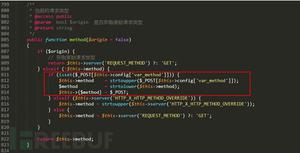如何用好Python的切片操作?
如何用好Python的切片操作?
回答:
简单用法:
a[start:stop] # items start through stop-1a[start:] # items start through the rest of the array
a[:stop] # items from the beginning through stop-1
a[:] # a copy of the whole array
使用步长
a[start:stop:step] # start through not past stop, by step要记住的关键点是该:stop值表示不在所选切片中的第一个值。所以,之间的差stop和start是选择的元素的数量(如果step是1,默认值)。
另一个功能是start或stop可能是负数,这意味着它从数组的末尾而不是开头开始计数。所以:
a[-1] # last item in the arraya[-2:] # last two items in the array
a[:-2] # everything except the last two items
step可能为负数:
a[::-1] # all items in the array, reverseda[1::-1] # the first two items, reversed
a[:-3:-1] # the last two items, reversed
a[-3::-1] # everything except the last two items, reversed
如果项目数量少于您的要求,Python对程序员很友好。例如,如果您要求a[:-2]并且a仅包含一个元素,则会得到一个空列表,而不是一个错误。有时您会更喜欢该错误,因此您必须意识到这种情况可能会发生。
与slice()对象的关系
[]上面的代码中实际上将切片运算符与slice()使用:符号的对象一起使用(仅在中有效[]),即:
a[start:stop:step]等效于:
a[slice(start, stop, step)]切片对象也表现略有不同,这取决于参数的个数,同样range(),即两个slice(stop)和slice(start, stop[, step])支持。要跳过指定给定参数的操作,可以使用None,例如a[start:]等于a[slice(start, None)]或a[::-1]等于a[slice(None, None, -1)]。
尽管: 基于的符号对于简单切片非常有帮助,但是slice()对象的显式使用简化了切片的程序生成。
以上是 如何用好Python的切片操作? 的全部内容, 来源链接: utcz.com/qa/427623.html



